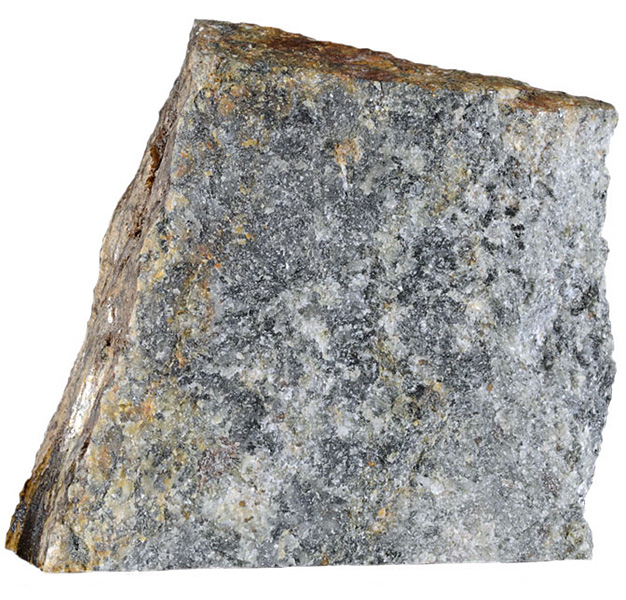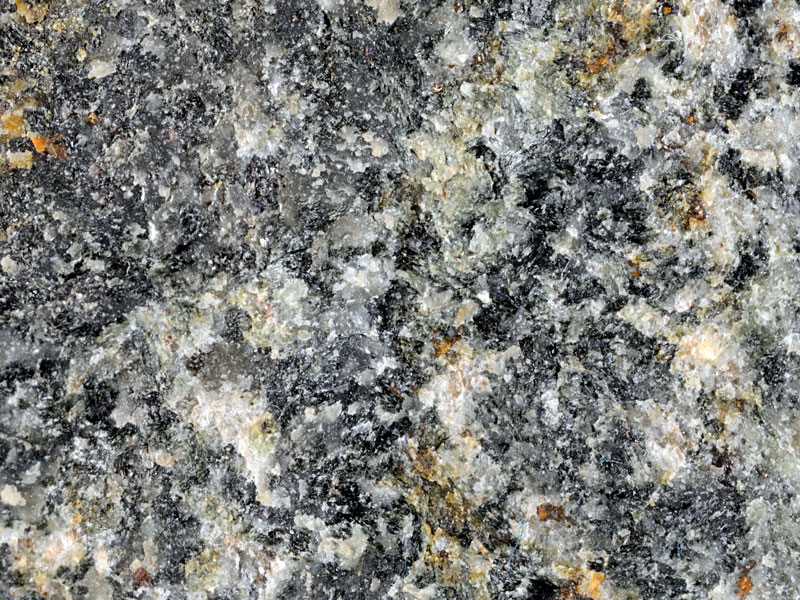
Fact sheet
This contact metamorphic rock comes from the Bridge of Feugh, near Banchory, Grampian, Scotland. The rock was originally a Proterozoic-age sediment that became metamorphosed during the Grampian orogeny. It was then subjected to heat and fluids during the intrusion of local Caledonian plutons to produce a skarn.
The thin section contains finely intergrown diopside (pyroxene), actinolite (amphibole) and quartz. There are several accessary minerals (notably titanite) exhibiting characteristic lozenge shapes and very high relief in plane polarised light. Clinozoisite is also present, characterised by medium relief and a single strong cleavage in plane polarised light, but striking patchy blue and yellow colours when viewed between crossed polars.
The United Kingdom Virtual Microscope (UKVM) collection consists of igneous, sedimentary and metamorphic rocks from around the UK.
It is intended as a teaching resource, helping to tell the story of the common rock types and how they form, and reflecting the history of the UK at the margins of the continent of Europe. The collection is a series of teaching sets, for example igneous rocks from the North Atlantic Igneous Province and SW England; high-temperature metamorphic rocks from Scotland and low-temperature metamorphic rocks from Wales; and sedimentary rocks, including English limestones and sandstones.







